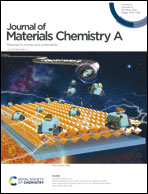The unconventional role of surface ligands in dictating the light harvesting properties of quantum dots
Abstract
The diligent utilisation of sunlight by green plants has essentially paved the way for the existence of life on earth. Our understanding of natural photosynthetic machinery reveals that the assembly of and precise interaction between different light-harvesting components is of prime importance for carrying out any meaningful processes. This has motivated the development of artificial light-harvesting materials, such as quantum dots (QDs), for mimicking the backbone of natural photosynthetic systems, in particular photoinduced electron- and energy-transfer processes. In conventional QD-based light-harvesting systems, surface ligands are considered as mere capping agents that provide colloidal stability to particles. Interestingly, the rational design of surface ligands can bring various forces into play, thereby controlling the interactions between the light-harvesting components and ultimately dictating the photophysical properties of the QDs. This review will primarily focus on the importance of finely tuned interparticle interactions, emanating from the thoughtful design of surface ligands, on light-induced energy- and electron-transfer processes in QD nanohybrids. We will also discuss the various applications of these QD-based light-harvesting systems that primarily originate from such ligand-driven favourable interactions (such as sensing, photopatterning, and photocatalysis). The review will conclude with our perspective on the potential role of surface ligands in bringing fundamental and applied advances in the area of QD-based light harvesting.



 Please wait while we load your content...
Please wait while we load your content...